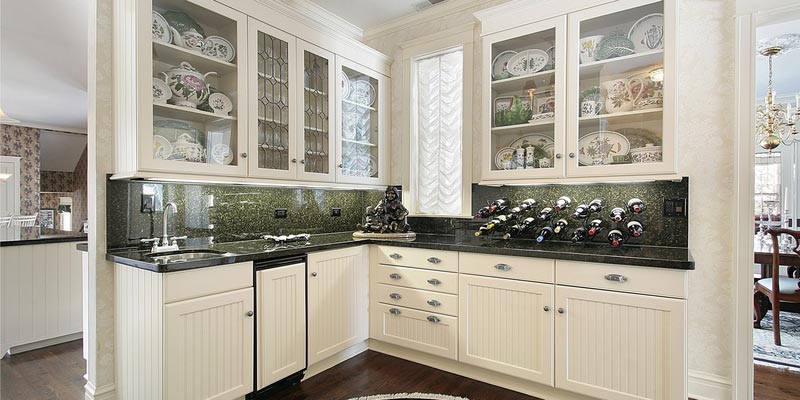There are so many simple and affordable ways to reorganize your kitchen cabinets so that they are more efficient, such as adding pull-out cabinets or additional cabinet tiers. There’s no denying that the traditional kitchen cabinet leaves a lot to be desired. Things get lost in the dark back corners and it’s nearly impossible to organize so many different items when you don’t have enough tiers to put everything on. And who wants to take everything out in order to reach the stuff stored in the back?
Some of the most difficult kitchen cabinets to organize (and keep organized) include the cabinet under the sink and cabinets used to store pots and pans. While plates and bowls neatly stack, other kitchen appliances and utensils are more complicated to pile together on one deep shelf. The following tips can help you make your kitchen cabinets more efficient in no time.
How To Organize More Efficient Kitchen Cabinets
#1. Organizing The Cabinet Under The Sink
The cabinet(s) located directly beneath the kitchen sink are often some of the messiest and most disorganized cabinets in the entire kitchen. Despite all of that obtrusive plumbing and piping in under-the-sink cabinets, you can add stackable wire shelving to make the most of available space. This simple trick can double or even triple the space you’re working with.
Add over the door hooks with attached shelving to store dish soap, dish brushes and other odds and ends. You can also add hooks to the ceiling of your cabinets to hang things like reusable shopping bags.
#2. Turntables For Your Cabinets
Turntable storage is a must to make the most out of any cabinet. Cabinets are deep by nature, and if they don’t pull out that means you have to remove a bunch of stuff to get to the things stored in the back. A turntable, or lazy Susan, makes it easy to access everything in your cabinets.
#3. Consider Open-Face Cabinets
Consider transforming some of your cabinets into open-faced storage. Or, add open faced shelving to open walls that you cannot afford to outfit with cabinetry. Either way, open cabinets offer a way to ensure your cabinets stay tidy–there’s no closing a door on these babies!
#4. Pull Out Cabinets
Pull out drawers can be added to any kitchen cabinet. They make it so much easier to see everything you have in your drawers. Sliding shelves should come with a shallow lip around the edges in order to prevent food from falling out when drawers are pulled in and out.
#5. Use Drawer Dividers
You can pick up a solid drawer divider for well under $10 at pretty much any home store. They might be cheap but they make all of the difference in the world when it comes to keeping your drawers and cabinets organized.
Knives, forks and spoons are commonly placed in dishware dividers, and just think how much they help organize things. Albeit less popular, there are other types of dividers for pretty much everything you store in your kitchen including pizza cutters, scissors, garlic mincers, and wine bottle openers. When everything has its place, your kitchen stays neat and tidy over the long haul.
#6. Add Dividers To Existing Cabinet To Create A Customized Space
Transform one cabinet into storage for all of your cookie sheets, cutting boards and similarly sized utensils by adding vertical dividers.
#7. Add A Second Or Third Tier To Kitchen Cabinets
Cabinets used to store pots and pans generally have one or two tiers, but that’s not enough unless you only have a couple of pans. Adding more tiers gives you space to store all of your pots and pans along with their lids.
#8. Add Wine Cabinets
Make use of wasted space on the side of your kitchen island by adding decorative wine storage space. This gives your kitchen added character as well as functionality. A pre-existing cabinet can be retrofitted into a wine cabinet by taking off the door and adding a custom-built insert.
#9. Organize Cabinets By Frequency Of Use
When you organize your cabinets put the things you use most in the front so that they are convenient to access. Give away the stuff you never use and store seasonal items or things you use occasionally in higher cabinets or harder to reach places.

